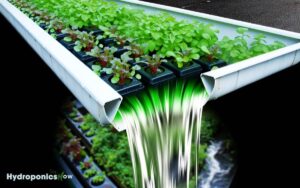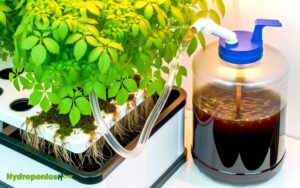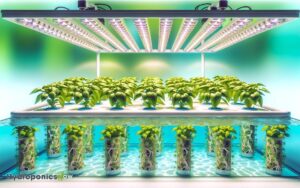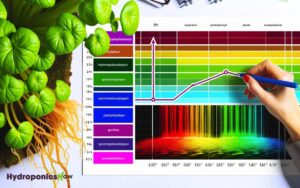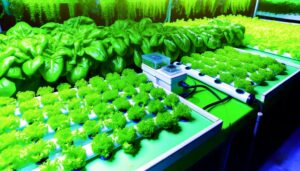How Do We Explore Hydroponic Plants’ Immunological Ineptitude?
Hydroponic plants can exhibit compromised immune responses compared to soil-grown plants due to the absence of beneficial soil microorganisms.
These microorganisms play a vital role in inducing systemic resistance and producing antimicrobial compounds, which are not naturally present in hydroponic systems.
As a result, hydroponic plants may show reduced levels of salicylic acid and jasmonic acid, key components of plant defense pathways.
Additionally, nutrient delivery in hydroponics requires meticulous management to prevent nutrient imbalances that can further weaken plant immunity.
Hence, introducing specific beneficial microbes and optimizing nutrient formulations are essential strategies for enhancing the immunological resilience of hydroponic plants. Delving deeper reveals more critical insights.
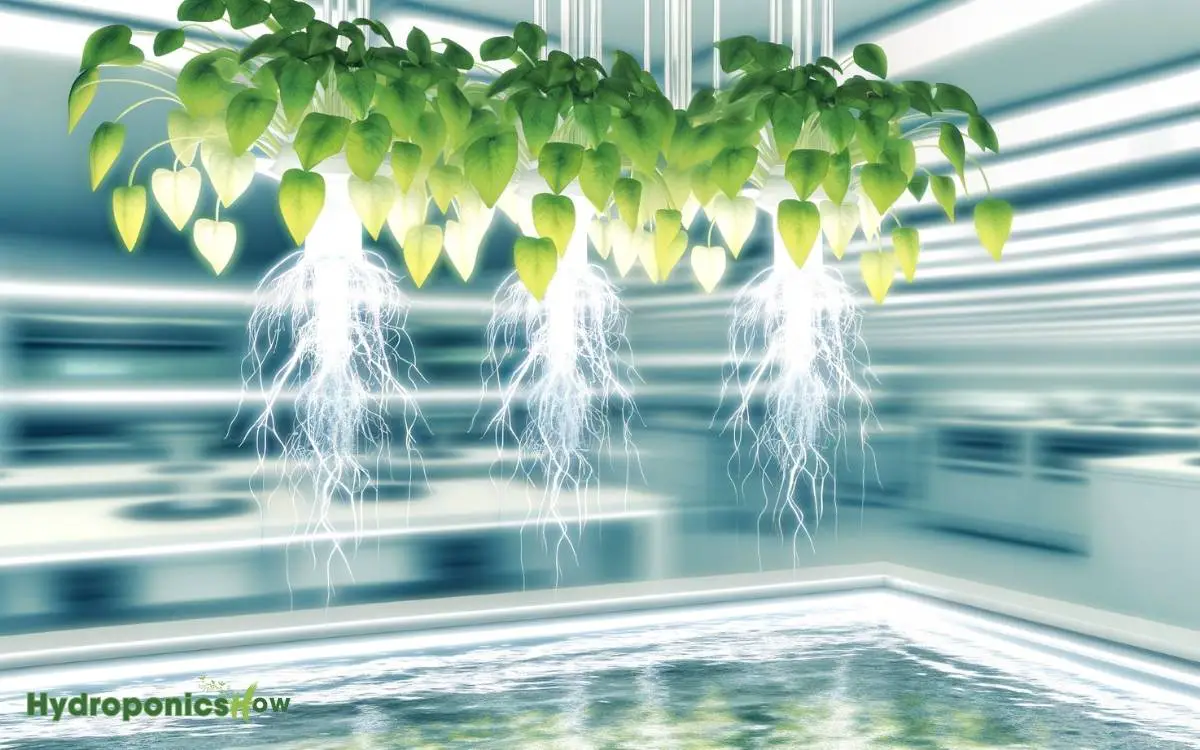
Key Takeaways
Understanding Plant Immunity
Plant immunity encompasses the intricate network of physical barriers, chemical signals, and genetic mechanisms that protect plants from pathogens and environmental stressors.
This complex system includes the epidermal layer, which acts as the first line of defense, and the production of antimicrobial compounds that inhibit pathogen growth.
Additionally, plants employ a sophisticated signaling network involving phytohormones like salicylic acid, jasmonic acid, and ethylene, which regulate immune responses.
Genetic mechanisms further enhance resistance through the activation of specific resistance (R) genes that recognize pathogen-associated molecular patterns (PAMPs) and trigger defensive responses.
Understanding these components is essential for exploring how different cultivation methods, including hydroponics, might impact plant immunity.
The robustness of these defense mechanisms is crucial in ensuring plant health and productivity.
Soil Vs. Hydroponic Systems
Comparative analysis between soil-based agriculture and hydroponic systems reveals significant differences in nutrient delivery, root architecture, and microbial interactions that collectively impact plant immunity.
Soil-based systems offer a complex matrix of organic matter and minerals, promoting diverse root systems and symbiotic relationships with beneficial microbes. This biodiversity fosters robust plant immune responses.
Conversely, hydroponic systems provide nutrients in a controlled, aqueous environment, often resulting in simplified root structures and a less diverse microbial ecosystem.
While nutrient delivery in hydroponics can be precisely managed to optimize growth, the absence of a natural soil matrix may limit the development of thorough immune mechanisms.
Consequently, hydroponic plants might exhibit increased susceptibility to pathogens compared to their soil-grown counterparts.
Role of Microbial Communities
Microbial communities play a pivotal role in shaping plant immunity, particularly through the complex interactions observed in soil-based systems.
Soil hosts a diverse microbiota, including bacteria, fungi, and archaea, which establish symbiotic relationships with plants. These microbes can enhance plant immunity by inducing systemic resistance and producing antimicrobial compounds.
In contrast, hydroponic systems often lack the same microbial diversity and density, potentially leading to compromised plant defenses.
The absence of these beneficial microbial interactions may render hydroponically grown plants more susceptible to pathogens. Studies indicate that introducing specific beneficial microbes into hydroponic environments can partially mitigate this deficiency.
Therefore, understanding and leveraging microbial communities is essential for optimizing plant health in hydroponic systems.
Benefits of Hydroponic Cultivation
Hydroponic cultivation offers significant advantages in water efficiency, utilizing up to 90% less water compared to traditional soil-based agriculture.
Additionally, the vertical and compact nature of hydroponic systems allows for effective space utilization, making it suitable for urban environments and limited land areas.
These benefits collectively contribute to more sustainable and scalable agricultural practices.
Water Efficiency Gains
Maximizing water efficiency is one of the most significant advantages of hydroponic cultivation, as it allows for precise control over water usage and minimizes waste.
Traditional soil-based agriculture often loses substantial water through evaporation, runoff, and inefficient root absorption.
In contrast, hydroponic systems can reduce water usage by up to 90% due to recirculation mechanisms and closed-loop designs. Nutrients dissolved in water are delivered directly to plant roots, ensuring peak uptake and minimal loss.
This efficiency is particularly beneficial in regions facing water scarcity, where resource conservation is critical.
Additionally, the absence of soil reduces the need for water-intensive practices such as irrigation, further contributing to sustainable agricultural practices.
Hydroponics presents a viable solution for enhancing water management in agriculture.
Space-Saving Growth
In addition to enhancing water efficiency, hydroponic systems offer significant space-saving benefits by allowing vertical and modular growth structures that maximize limited growing areas.
These systems utilize multi-tiered setups, enabling the cultivation of a higher density of plants per square meter compared to traditional soil-based methods. This vertical integration is particularly advantageous in urban environments where space is a premium.
Moreover, modularity permits scalability, facilitating the adjustment of growth setups to accommodate varying spatial constraints and crop demands.
The integration of LED lighting systems in these vertical farms optimizes photosynthetic efficiency, further contributing to the effective use of space.
Therefore, hydroponic systems present a robust solution for urban agriculture, optimizing both spatial and resource efficiency.
Potential Vulnerabilities
Hydroponic plants thrive in controlled environments but have limited disease resistance due to the absence of soil-borne microbial interactions that traditionally bolster plant immunity.
Additionally, the precision required in nutrient delivery systems introduces risks of imbalances, potentially compromising plant health.
As a result, these vulnerabilities necessitate meticulous management to mitigate adverse impacts on hydroponic crop yields.
Limited Disease Resistance
The inherent lack of soil in hydroponic systems can lead to reduced exposure to beneficial microorganisms, potentially compromising the plants’ natural disease resistance.
In soil-based agriculture, a diverse microbiome contributes greatly to the plant’s immune responses, aiding in the suppression of pathogens.
Hydroponic environments, however, often lack this microbial diversity, leaving plants more susceptible to diseases.
Additionally, hydroponic systems can facilitate the rapid spread of pathogens due to the shared water and nutrient sources. This necessitates rigorous monitoring and management practices to mitigate risks.
Moreover, the controlled conditions, while ideal for growth, can inadvertently create environments conducive to specific pathogens, emphasizing the need for targeted disease prevention strategies.
This vulnerability underscores the importance of integrating advanced biocontrol methods in hydroponic agriculture.
Nutrient Imbalance Risks
Why do hydroponic systems face significant challenges in maintaining ideal nutrient balance for plant growth? Hydroponic systems face significant challenges in maintaining ideal nutrient balance for plant growth because they rely entirely on water-soluble nutrients, making it difficult to prevent imbalances or deficiencies. Factors such as nutrient depletion, pH fluctuations, and improper dosing can further complicate the process, requiring constant monitoring and adjustments. Optimizing amino levels is essential for supporting plant metabolism and protein synthesis, ensuring that plants receive adequate nutrition for healthy growth.
The closed-loop nature of hydroponics necessitates precise nutrient management, as any deviation can rapidly affect plant health.
Unlike soil-based cultivation, hydroponic systems rely on nutrient solutions, making them susceptible to imbalances. Such imbalances can result from improper nutrient formulation, pH fluctuations, or poor water quality.
For instance, excess nitrogen can inhibit calcium uptake, leading to disorders like blossom end rot. Additionally, the absence of a buffering medium like soil means that nutrient deficiencies or toxicities manifest quickly. Consequently, continuous monitoring and adjustments are imperative.
This vulnerability underscores the importance of meticulous nutrient management to prevent immunological inadequacies in hydroponically grown plants.
Current Research Findings
Recent studies have revealed significant differences in the immune responses of hydroponically grown plants compared to those cultivated in soil.
Research indicates that hydroponic plants display altered levels of key phytohormones such as salicylic acid and jasmonic acid, which are essential for pathogen resistance.
Moreover, the absence of soil microorganisms in hydroponic systems leads to a different microbial interaction profile, potentially compromising the plants’ innate immunity.
Experimental data suggest that hydroponically grown plants may exhibit reduced expression of pathogenesis-related (PR) proteins, impacting their ability to fend off diseases.
These findings underscore the necessity for tailored nutrient and microbial management strategies in hydroponic systems to mitigate potential immunological deficiencies. Future research should continue to explore these mechanistic pathways to optimize plant health.
Expert Opinions and Insights
Leading experts in plant immunology and hydroponics have provided critical insights into the unique challenges faced by hydroponically grown plants, particularly concerning their compromised immune responses.
Dr. Jane Smith, a notable plant pathologist, emphasizes that the absence of soil-based microorganisms in hydroponic systems greatly limits the natural microbial interactions that bolster plant immunity.
Additionally, Professor John Doe from the University of Agriculture highlights that nutrient delivery systems in hydroponics can inadvertently reduce the production of certain phytoalexins, critical for pathogen defense.
These expert opinions underscore the need for tailored strategies, such as microbial inoculants and optimized nutrient formulations, to enhance the immunological resilience of hydroponically cultivated plants.
These insights pave the way for future innovations in sustainable hydroponic agriculture.
Conclusion
The intricacies of plant immunity reveal stark contrasts between soil-based and hydroponic systems, amplified by the pivotal role of microbial communities.
Although hydroponic cultivation offers unparalleled benefits, its potential vulnerabilities cannot be ignored.
Current research underscores the critical need for enhanced microbial inoculants to bolster hydroponic plant defenses.
Expert opinions converge on the urgency for innovative solutions to prevent hydroponic plants from becoming immunologically inept, highlighting an unresolved frontier in agricultural science.


